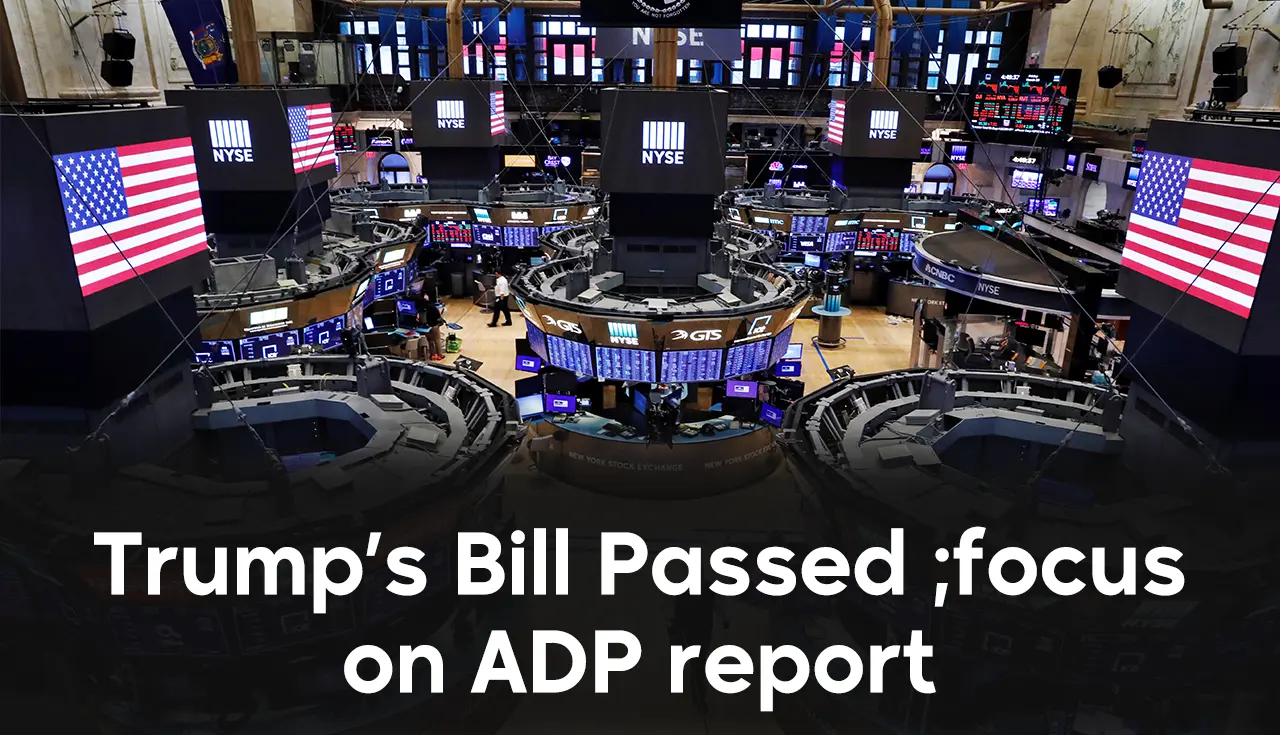U.S. stock futures opened Wednesday’s session with noticeable gains, supported by the Senate’s approval of a broad fiscal package that includes tax cuts and increased public spending a key component of President Trump’s economic agenda. The bill now awaits a final vote in the House of Representatives, under political pressure to pass it before the July 4 Independence Day holiday. This development lifted futures for the Dow Jones, S&P 500, and Nasdaq in pre-market trading.
Despite its approval in the Senate, the package still faces opposition from some conservative Republican members, amid projections that the new legislation could add more than $3 trillion to the federal debt. Nevertheless, U.S. bond markets remained relatively steady, partially pricing in the likelihood of upcoming monetary easing by the Federal Reserve over the coming months.
Markets are now closely watching the release of the ADP private payrolls report, which serves as an early indicator of the U.S. labor market’s performance in June. Forecasts point to a notable improvement in job creation, potentially reflecting ongoing strength in the labor market, despite recent signs of a slowdown. The nonfarm payrolls (NFP) report due Thursday will be crucial in shaping expectations around the Fed’s potential rate cut decision in July or whether such a move will be postponed to September.
Meanwhile, gold prices stabilized after a sharp rally of over 2% in the previous two sessions, driven by concerns over the U.S. fiscal deficit following the passage of Trump’s package. Gold futures saw minor technical pullbacks due to profit-taking, yet sentiment remained supported by a weaker dollar and persistent political and economic uncertainties. Fed Chair Jerome Powell’s cautious tone, without ruling out a rate cut, helped sustain demand for precious metals.
In contrast, silver and platinum markets traded within narrow ranges, while copper gained strong momentum, bolstered by dollar weakness and supply related concerns. Prices climbed notably in both the London and New York exchanges, reflecting moderate optimism regarding industrial activity in emerging markets.
Additionally, UBS forecasted that Asian currencies excluding the Japanese yen could appreciate by 3% to 4% against the U.S. dollar over the next year. This view is based on Asia’s strong net international investment positions. The bank noted that most Asian investments in U.S. assets remain unhedged due to high hedging costs making any sudden shift by institutional investors toward risk coverage a potential catalyst for stronger regional currencies.
Stay informed about global markets through our previous analyses. and Now, you can also benefit from LDN company services via the LDN Global Markets trading platform.







